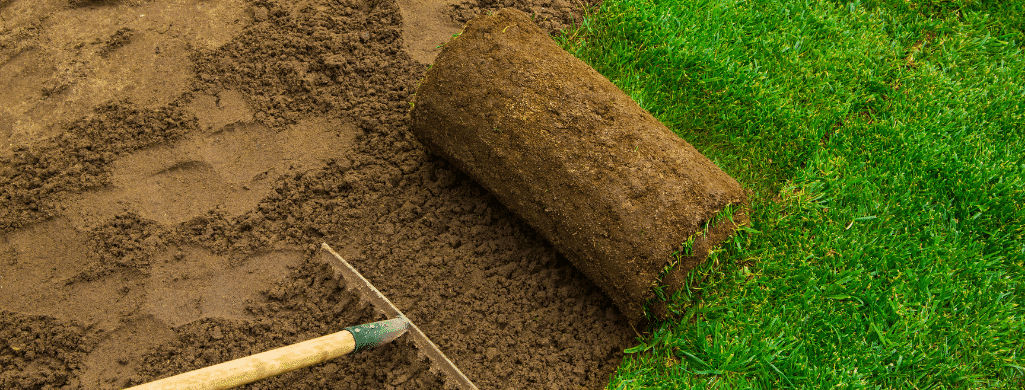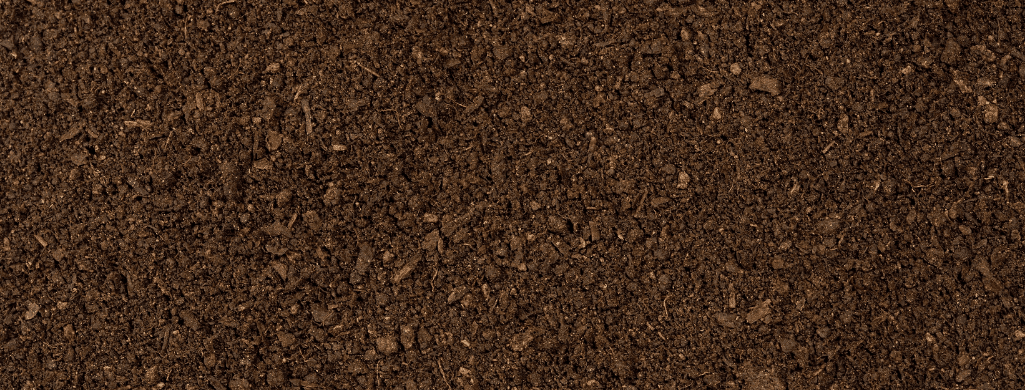Many homeowners understand the importance of reseeding their lawns to eliminate unsightly bare spots and keep their grass lush and green.
Reseeding a lawn involves careful planning and a bit of effort.
You must calculate how much grass seed you need for your lawn, buy the seeds, and plant them at the right time for optimal results.
For a large job, you may even need to rent a broadcast spreader for even seed application.
But what if it was possible to skip these extra steps?
Can grass grow on its own?
It is possible for grass to grow, spread, and seed without any intervention under ideal environmental conditions. How fast grass grows and spreads ultimately depends on the climate, soil health, and grass type. Some types of grass spread very quickly, while others may take years.
Grasses with lateral growth spread faster than bunch-type grasses.
Extreme hot or cold temperatures, as well as a lack of rainfall, will slow the growth of any grass type.
Read on to learn more about how grass grows, spreads, and seeds.

Table of Contents
What Does Grass Need To Grow?
Healthy grass growth requires four things:
- Sunlight
- Moisture
- Nutrients
- Proper soil temperature
Climate significantly impacts grass growth, so choosing the best grass type for your region is essential.
Cool-season grasses grow best in areas with mild summers.
Warm-season grasses thrive in hotter temperatures and go dormant in cold weather.
You must also evaluate how much sunlight and rainfall your lawn receives before choosing which grass to plant.
Ryegrass and fescue grass species do well in shaded lawns, but Bermuda grass requires full sunlight.
While Bermuda grass needs plenty of sunshine, it is well-suited for drought conditions.
Ryegrass and Kentucky bluegrass are more likely to go dormant without adequate rainfall.
Soil health also plays a crucial role in healthy grass growth.
Nutrients in soil, such as nitrogen, phosphorus, and potassium, are essential for grass to develop strong roots and maintain its green color.
Soil temperature is equally important, as grass seeds will not germinate if the ground is too cold.
The ideal soil temperatures for grass seed germination range from 50-65° degrees Fahrenheit (10-18° C) for most types of grass.
If you plant your grass seeds when the soil is too cold, they will remain dormant and may even rot before they can sprout.
Warm-season grasses thrive when the soil is above 80° degrees Fahrenheit (27° C).
But, these hot temperatures will cause cool-season grasses to go dormant.

How Does Grass Spread?
Now you understand what your grass needs to grow, but how does it spread?
Grass spreads by dropping its seeds or through the horizontal growth of rhizomes and stolons.
Stolon grasses and rhizome grasses spread faster than grasses with a bunch-type growth pattern.
Bunch grass will eventually spread, but it may take years instead of weeks to fill bare spots in a lawn.
Flowering and Seed Production
When grass blades grow long enough, they will produce flowers.
These grass flowers will have either female or male reproductive organs, or sometimes, both.
Once the wind or insects pollinate the flowers, they will develop seeds.
Most lawn grasses do not produce seeds because frequent mowing prevents them from flowering.
Rhizomes

Rhizomes are underground stems produced by some grass species.
These stems grow laterally away from the base of the plant, producing new shoots called tillers and downward-growing roots.
Each tiller grows upward from the rhizomes below ground and is capable of producing seeds.
Rhizomes require a considerable amount of energy and moisture to grow.
In areas with drought conditions, rhizome grasses will spread very slowly.
The spread of rhizome grasses may also be controlled with regular mowing.
Stolons
Stolons are very similar to rhizomes, but the horizontal stems grow from the base of the plant above the ground.
Nodes along the stolons are capable of producing roots.
Buds also form on the ground runners and develop into upright shoots, where they become individual plants.
The individual plants will grow their own stolons, and the process will repeat.
Stolon grasses spread more slowly than rhizome grasses because a layer of soil does not protect them.
Above-ground stolons will also cause thatch to develop on a lawn.
Grasses with rhizomes or stolons are considered invasive species due to their rapid growth.
Some species, such as Bermuda grass and zoysia, produce both rhizomes and stolons.
Will Grass Naturally Fill In Bare Spots?
People and pets usually cause bare spots on a lawn.
Heavy foot traffic or animals digging and using your yard as a bathroom will easily damage your grass.
Fungal diseases and poor nutrient absorption will also lead to dead grass and bare patches.
Treat dead patches of grass for diseases as soon as possible so they do not spread to the rest of your lawn.
Regular soil testing will tell you which nutrients your grass needs so you will be able to make the proper amendments.
If your grass spreads by rhizomes or stolons, it will repair itself and fill in the bare spots, but do not expect a lush lawn overnight.
Depending on the type of grass on your lawn, it may take anywhere from a few days to several weeks to fully cover the bare patches.
Bunch-type grasses do not spread, and your lawn will require overseeding to repair it.

Which Grass Types Quickly Spread?
All species of warm-season grasses suitable for lawns produce rhizomes or stolons to spread.
Bermuda grass spreads the fastest of all warm-season grasses and grows through a combination of rhizomes and stolons.
Many people consider Bermuda grass an invasive weed because it is known to overtake slower-growing types of grass.
However, Bermuda is the perfect grass for a low-maintenance and lush lawn if you live in a warmer southern climate.
Zoysia grass also spreads through rhizomes and stolons, but it is one of the slowest warm-season grasses to spread.
It may take up to three years for Zoysia grass to spread over your entire lawn.
Centipede grass is also a very slow-growing warm-season grass that spreads through stolons.
For cooler northern climates, Kentucky bluegrass is a cool-season grass with a fast-spreading rate through underground rhizomes.
Kentucky bluegrass is slow to become established, but once it does, it will spread very quickly during the cooler months.
If you live in a cooler climate and your lawn is prone to bare spots, avoid non-spreading grass species like tall fescue and perennial ryegrass.
The following table shows common lawn grasses and their growing habits.
| Grass Species | Grass Type | Growth Habit |
|---|---|---|
| St. Augustine | Warm-season | Stolons |
| Zoysia | Warm-season | Rhizomes and Stolons |
| Bermuda | Warm-season | Rhizomes and Stolons |
| Centipede | Warm-season | Stolons |
| Bahiagrass | Warm-season | Rhizomes |
| Tall Fescue* | Cool-season | Bunch-growing |
| Fine Fescue* | Cool-season | Bunch-growing |
| Kentucky Bluegrass | Cool-season | Rhizomes |
| Perennial Ryegrass | Cool-season | Bunch-growing |
| Bentgrass | Cool-season | Stolons |
Further Reading: Fescue grass spreading: Is it quick or slow?
Why Is Your Grass Not Spreading?
There are several reasons why your grass is not spreading.
First, it is important to understand the type of grass in your yard.
If your lawn contains a bunch-type grass, it will not spread no matter what you do.
To achieve a lush, healthy lawn with the ability to repair itself, you will need to overseed with a rhizome or stolon grass variety.
The climate in your area will affect how quickly your grass spreads as well.
Too much or too little sunlight or water combined with extreme hot or cold temperatures may cause your grass to grow slower or go dormant.
Poor lawn maintenance practices will also slow the spread of your grass.
A lack of nutrient availability in the soil, mowing your grass too low, and failing to regularly de-thatch and aerate your lawn will lead to bare patches and growth issues.
How To Make Grass Spread Faster
A thick carpet of grass looks appealing and helps prevent weed growth on your lawn.
Fortunately, there are several ways to encourage your grass to spread faster.
Start by removing any patches of dead grass on your lawn so the healthy grass has room to spread.
A soil test of the bare spots will reveal which nutrients your soil is lacking, so you will be able to use the correct fertilizer.
Avoid applying too much fertilizer to your lawn, as this will cause the grass to become weak and grow slowly.
Establish good lawn watering practices by ensuring your yard gets at least 1” inch of water per week.
Water new grass more frequently until it develops a strong root system, then switch to a weekly watering schedule.
Ensuring your grass receives adequate water not only helps it grow but increases your lawn’s drought resistance.
The best time to water your grass is right after mowing.
Do not mow your lawn too frequently or cut your grass too short.
Shorter grass cannot absorb enough nutrients or energy from sunlight for healthy growth.
Frequent mowing causes the grass to focus all of its energy on upward growth instead of spreading horizontally.
Cutting your grass too short also increases the risk of scalping it, which may cause it to die.
As a general rule, only cut one-third of the length of your grass in each mowing session.
If your grass is too tall, you must mow in two sessions a few days apart.
Keep your lawn mower blades sharp, and only mow as often as needed to maintain the optimal height of your grass type.